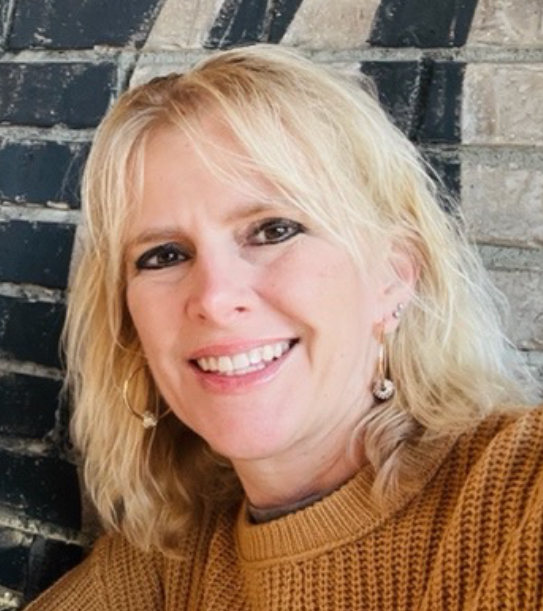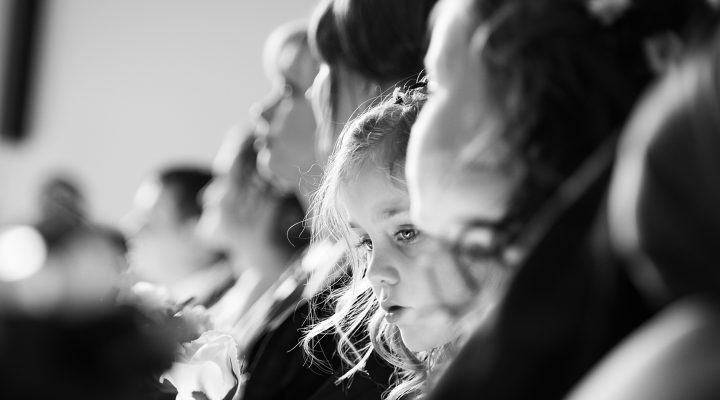The physical health of congregants is, of course, a concern for pastors, just as their spiritual health is. If congregants suffer a broken limb, a stroke, a heart attack or cancer, the pastoral staff will be there to walk alongside them as they receive treatment and heal.
Psychological well-being maybe doesn’t receive quite as much attention, but it is important as well.
Most clergy will know of at least some mental health issues among congregants and be there to support congregants toward healing.

Geneece Goertzen-Morrison
Holistic care of body, mind and soul is vital for vibrant, engaged congregations. It is hard to be fully engaged when physically in pain, and it is hard to be fully engaged when emotional pain is present as well.
One way to increase physical and emotional health is no further away than domestic violence awareness and training. Yet this is not what most people consider in their first thoughts for increasing congregational health — because abuse is a taboo topic, especially in churches. Being informed about domestic violence not only saves lives but also improves them. Addressing domestic violence in the church increases spiritual resilience as well.
When the church isn’t aware of the ramifications of abuse, victims suffer in silence. Whether it is intimate partner violence, child abuse or sexual assault, congregants want to hear that their faith leaders are knowledgeable. And whether it happened last week, last month, last year or 30 years ago, those who carry the weight of these burdens alone need to know their pastors care.
One in three women and one in four men have experienced some form of violence by an intimate partner. When statistics about child abuse and dating violence are added, the number of possible survivors sitting in your pews grows even larger. Abuse happens with all ethnic backgrounds, genders, ages and income levels. No one is immune, not even those in the church.
Negative health outcomes for adults include the ones we probably first think about – physical injuries like bruises and broken bones — but also include psychological injuries such as anxiety, depression and PTSD. Living with abuse profoundly affects mental health. But what you may not know is that some long-term physical ailments result from living with abuse as well. These may include heart problems, high blood pressure, neurological disorders, immunological concerns, digestive issues, cancer, migraines, nightmares and chronic pain.
“For some individuals in your congregation, mental and physical health ailments are going to be the result of domestic trauma.”
This means for some individuals in your congregation, mental and physical health ailments are going to be the result of domestic trauma. Talking about domestic violence, child abuse and trauma lets your congregation know it’s OK for them to speak up about it. Many are afraid to share what they have lived with due to shame about what they experienced. If the perpetrator of harm is a significant member of the congregation, it is even harder.
Increasing congregational health isn’t just about adults either.
For healthier babies, we need to decrease domestic violence. Babies born to women experiencing violence during pregnancy have altered brain structure and development. These changes can lead to emotional and behavioral symptoms of trauma during the first year of life — symptoms like excessive crying, higher sensitivity to light and sound, and avoidance of physical contact. Women may think their child is not affected, but evidence shows otherwise. Abuse in the home often increases during pregnancy, so it is important to pay attention to this.
When there is violence in the home, it affects the children as well. The lifetime impact of children experiencing abuse is found not only in physical injury but also in symptoms of anxiety, depression, stress, acting out and lower academic achievement. Abused children are more likely to use drugs and alcohol and commit crimes as they age.
The single largest predictor of future relationship violence is whether the child grew up in an abusive home. To protect future families, we have to address abuse in the home.
“Youth groups are the perfect place to talk about bullying.”
Youth groups are the perfect place to talk about bullying. Many kids have experienced this, and all of them know it exists. Contrasting bullying to the fruit of the Spirit is a good place to start. That can segue into conversations about healthy vs. toxic relationships.
Teens may not know about the signs of toxic dating relationships. Talking about relationship dynamics doesn’t escalate teen sexuality, it decreases coercion and rape by strengthening personal boundaries and increasing self-esteem. We want emotionally strong teens who can recognize toxic behavior and end harmful relationships before it escalates.
Experiencing abuse in later life happens too. Neglect, abandonment, financial exploitation and physical, emotional or sexual harm are not unknown among the elderly. Perpetrators may take advantage of the lack of mobility or chronic health conditions among older adults. Stricter gender norms among older adults may keep victims from speaking out against the mistreatment they receive from their spouses or caregivers. Older women may have a more challenging time trying to escape the violence due to multiple dependencies.
Abuse happens across the nation. It happens in both urban and suburban communities. Even churches in rural areas need to be alert to possible situations of domestic violence in the congregation. Rates of abuse are higher in rural communities, injuries are more severe, and services are fewer. Those who perpetrate abuse often move and isolate their families in rural areas due to the reduced oversight.
“When multiple factors overlap, there can be an increased possibility of harm.”
It is also important to be aware of intersectionality. When multiple factors overlap, there can be an increased possibility of harm. Women aged 18 to 24, those with disabilities, people of color, immigrants and those who identify as LGBTQ may have a higher risk. Financial instability, not having a support system and strict gender norms also can raise the risk.
Having faith leaders who are alert and aware of how abuse can impact health will make a difference in your congregation.
To decrease risk and increase health, there are several actions a faith community can implement:
- Learn about domestic violence. Pastors, elders, chaplains, and even lay leadership in faith-based communities are influential allies for the prevention of abuse if they are knowledgeable about it.
- Teach about healthy relationships at all age levels in the church. Start with conversations about bullying for children and ease into conversations about healthy and toxic dating and marriages with teens and adults.
- Promote positive parenting and create support structures for parents in the church. Parenting can be hard. Let families know they don’t have to walk this journey alone.
- Improve the safety of the congregation by addressing church policy for child abuse, sexual assault and domestic violence. Know that victims and survivors in your congregation want their church to be involved.
- Know about resources and where to refer, including the teen dating and domestic violence hotlines and where to find family violence shelters.
Geneece Goertzen-Morrison is a master of divinity and licensed master of social work graduate from Baylor University’s Truett Seminary and Garland School of Social Work. As a survivor of more than two decades of abuse, her passion for ministry includes the intersection of faith and practice, particularly on the subject of domestic violence. Find her at HopeRiseThrive.com and @Hope_Rise_Thrive on Facebook and Instagram.
Related articles:
How the church becomes a grooming place for domestic violence | Opinion by Geneece Goertzen-Morrison
What does complementarianism have to do with Domestic Violence Awareness Month? | Analysis by Rick Pidcock
The seeds of evangelical angst over gender and sex were sown decades ago
Why do we still wonder when violence happens? | Opinion by Kathy Manis-Findley
Why can’t churches get handling abuse right? | Analysis by Susan Shaw


